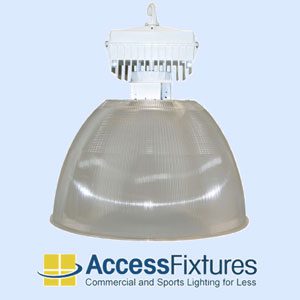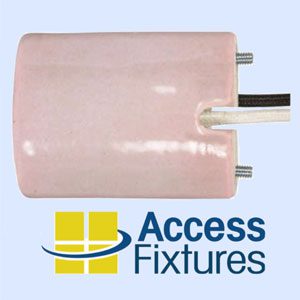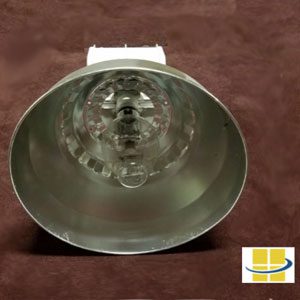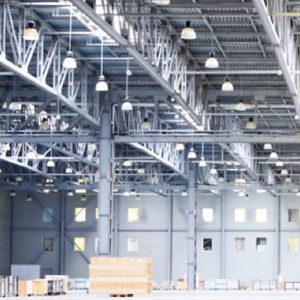A recent fire that engulfed an industrial site in New York is said to have been caused by the ignition of highly combustible cardboard and plastic recycling. One hundred members of the local fire department responded to the blaze, which caused the roof and some of the walls to collapse. The blaze quickly took over the six-block-long building and prompted the authorities to issue a shelter-in-place order for all nearby residents.
The cause of the fire? A single light bulb that fell from the ceiling.
Identify the Risk: Non-Passive Failure of Metal Halide Fixture Lamps

Fires like this one are often the result of non-passive failure of a metal halide (MH) lamp, during which the lamp explodes and rains molten glass onto anything beneath it. A metal halide or pulse start metal halide (PSMH) lamp can fall or explode due to being reset beyond its rated life hours, being under-cooled or over-cooled, or by not being given appropriate airflow (i.e., too much or not enough). These are just some of the contributing factors of a non-passive failure, though the list goes on. This can, however, be avoided by using an open-rated MH or PSMH lamp.
Metal Halide Lamps and Open-Rated Sockets

Pink open-rated mogul sockets prevent non-open-rated metal halide and pulse start metal halide lamps from being installed in a high bay luminaire.
Metal halide and PSMH lamps can be used in enclosed luminaires. Non-lensed luminaires, which are typically high bay lights, require open-rated lamps. Open-rated sockets are pink and will only accept protected metal halide lamps that are not at risk of non-passive failure. Both enclosed fixtures or those with open-rated sockets will provide a safe working environment. Protected metal halide lamps contain quartz shrouds that keep hot particles inside the lamp in the event of an arc tube rupture. Open-rated lamps and sockets do not require lenses, deliver terrific light, and have enhanced safety. Many insurance companies recommend and even require open-rated lamps and sockets.
Performing a Simple Safety Check on Your High Bay Metal Halide Fixture

Determining if a high bay light fixture with a MH or a PSMH lamp is safe is as simple as 1-2-3. If any of the following is true, the high bay is safe:
- The high bay has a glass or acrylic lens.
- The lens will stop molten glass from falling after a non-passive failure.
- The mogul socket that holds the lamp is pink.
- If the mogul socket is pink, it will only accept an open-rated lamp.
- The lamp in the fixture is an open-rated lamp.
- Check the model number of the lamp and confirm it is rated for open sockets.
Don’t be remiss. Check out your high bay luminaires today. These simple checks will ensure that a non-passive failure doesn’t injure your team members or destroy your physical plant.
LEDs Are a Safe and Energy-Efficient Alternative to MH and PSMH
MH an PSMH have been used in high bay luminaires for years. Now, unless your facility has particularly high heat, LED high bay lights may be a better solution.
LEDs eliminate the aforementioned risks, as they do not suffer non-passive failure.
Do you prefer to speak with a lighting expert? Contact an Access Fixtures lighting specialist by clicking here or by calling 800-468-9925

